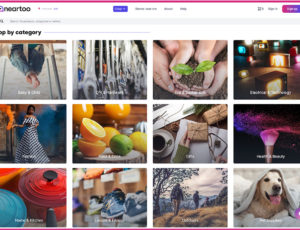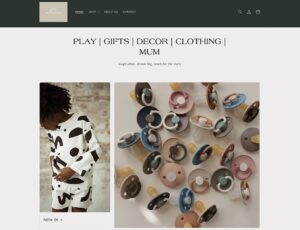Kooomo shares top tips for providing the optimum personalised shopping experience

Retailers looking to optimise their ecommerce offerings must reassess their approach to personalisation and ensure they are not pursuing a “one-size-fits-all” strategy, according to global ecommerce platform provider Kooomo.
Kooomo advises that behavioural targeting is a pivotal way to engage consumers, repeat purchases and drive sales. Retailers just need to ensure they are implementing the right strategies for individual consumers.
Commenting is Ciaran Bollard, CEO at Kooomo. “Communication that focuses on engagement, loyalty and the individual needs of every consumer is undoubtedly the way forward; particularly in the current climate with users craving that human touch while shopping online.
“However, for retailers looking to tailor the perfect personalised strategy for their audiences, moving beyond manual personalisation towards machine learning will be crucial. Also, recognising that personalisation comes in many different forms. The bottom line here is that offering a “one-size-fits-all” approach is no longer sufficient.”
In light of this, Bollard offers the following top tips for retailers looking to take personalisation to the next level.
• Find a balance between manual and machine-learning personalisation
“There are two main personalisation processes: manual and machine-learning personalisation. On the one hand, manual processes such as changing the wording of content to suit the needs of different users are necessary. They allow retailers to deliver tailored experiences based on previous behaviours. However, the time and effort required to manage these processes are typically disproportionate to the value they drive. This calls for retailers to reconsider their personalisation approach.
“Machine learning, on the other hand, utilises algorithms and predictive analytics to present relevant content to users, delivering depth, specificity and speed. For example, it takes just three clicks to determine a suggested shopping item and with every click comes greater knowledge. Then again, not every process needs to be data-driven and knowing everything about the shopper can unsettle certain demographics. Retailers looking to build trust and optimise their ecommerce offerings must therefore find the right balance between these two processes.”
• Move beyond the “one-size-fits-all” approach
“Consider each customer segmentation and how diverse they are. For example, a Gen Zer who is eager to keep up with the latest trends will be looking for a different experience to a boomer who is striving for convenience when shopping online. Personalisation algorithms and strategies should therefore differ depending on the unique needs of every user, as well as the objectives and KPIs of the business itself.
“You must also consider location, language and cultural differences to ensure relevant content hits the right people. The reality is that many retailers fall short of creating a flawless personalised experience; opting for bulk promotional materials that only drive sales in the short term.”
• Know the difference between B2B and B2C personalisation
“Other factors retailers must consider are the differences between B2B and B2C personalisation. For example, while B2B strategies focus on buying frequency and increased profit margins, B2C focuses on employee engagement. Alongside this, the decision-making process in B2B retail is more complex; there is often more than one person involved when purchasing a product.
“There are also personalised promotions such as flash sales to consider. While deals of the day may work for B2C customers, B2B consumers are often sceptical of these marketing tactics and spend time researching the brand to ensure the service provided meets their KPIs. As such, retailers must take the time to implement the different algorithms and strategies needed to satisfy B2B and B2C consumers.”
• Merge offline and online data
“With psychical stores now open and consumers flocking back to the high streets, merging online and offline data will be essential for merchants looking to navigate, understand and enhance the personalised shopping journey. The fact is that a lot more customers are satisfied with their purchase when buying in-store. This must reflect in the online shopping experience.
“Merging offline and online data also works both ways, as retailers can utilise online trends to adapt in-store promotions. For example, if a specific trend is taking off in a certain area or amongst a specific age demographic, retailers can tailor their strategies accordingly. Omnichannel marketing, email-based receipts and loyalty cards that work both online and in-store are key ways to achieve this.”
• Track the value of personalisation strategies
“What is the point of establishing a successful personalisation strategy if retailers cannot track the benefits to the wider business? Benefits tracking, customer lifetime values and ROI analyses not only provide insight into the financial and non-financial value that has been delivered but also what worked well and what could have worked better. There is always room for improvement and it is important that retailers recognise this.”
If you are interested in hearing more about personalisation, you can watch Kooomo’s webinar with Segmentify here.












